The EU-Turkey Deal
Five Years of Failure March 2016 - March 2021

TIMELINE OF EU-TURKEY DEAL
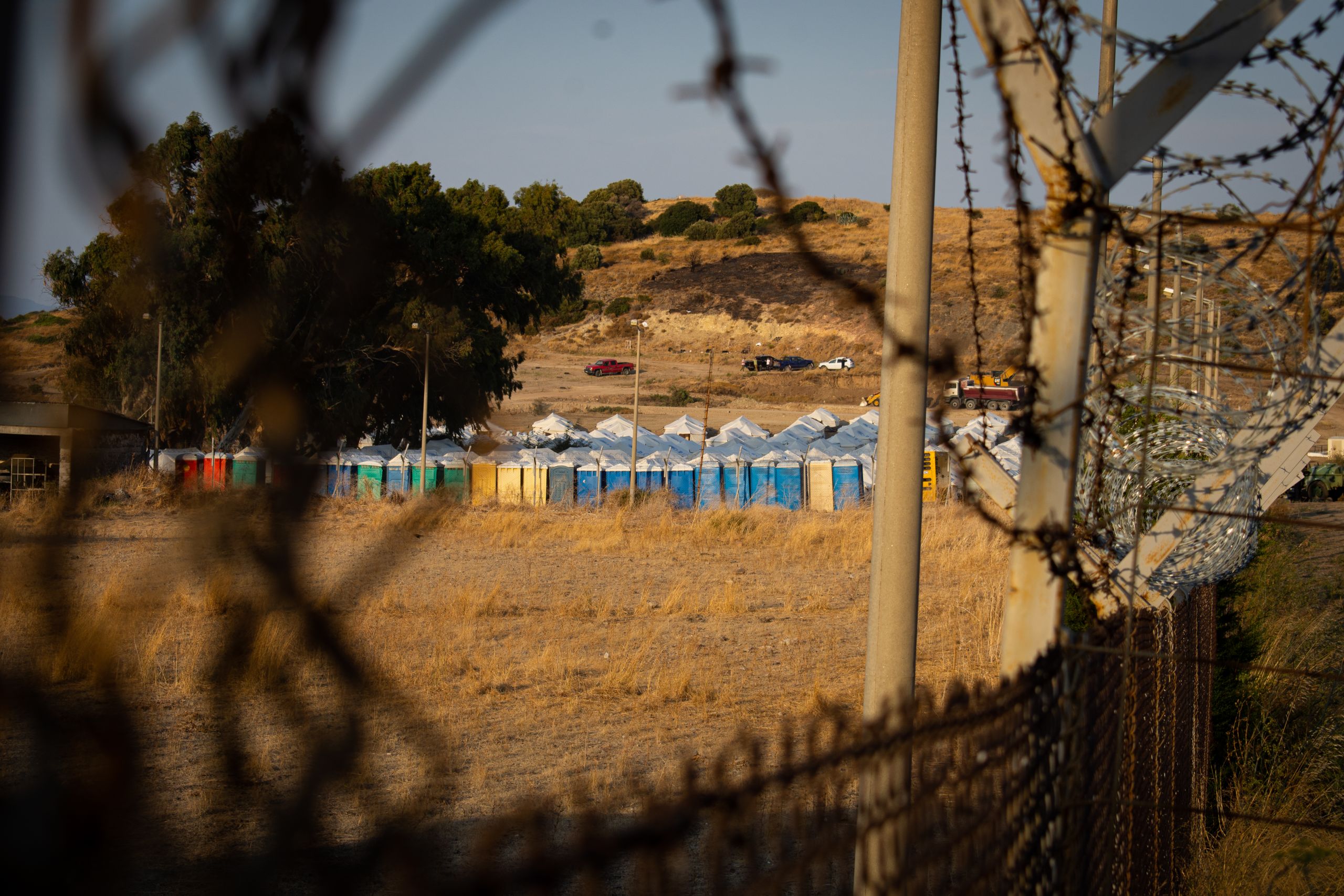
Photo: Yousif Al Shewaili / Oxfam
Photo: Yousif Al Shewaili / Oxfam
What does the future hold?
Despite the clear failures of the past, the EU is forging ahead with its plan to copy the so-called ‘hotspot’ approach keeping people trapped on the Greek islands. In September 2020, the EU proposed its roadmap for EU asylum law – the “Asylum and Migration Pact”. If this roadmap is approved, it will result in the mass use of de facto detention and restrict the rights of asylum seekers.
Sites
The EU’s proposal will oblige countries to put people in closed centres, if they did not enter the EU through a checkpoint – including people who are rescued at sea. While in these sites, asylum seekers’ situation will be screened for identification purposes. During this period, the people in the site “shall not be authorised to enter the territory of [the EU]”i. This means that asylum seekers will be held in closed centres without the ability to leave the site. Since the majority of these centres will be in remote areas on the EU’s external borders, they will have little access to basic services, such as doctors or legal aid.
In Lesbos, the use of closed and substandard facilities have made women asylum seekers feel unsafe. R. who lives in the closed site, told us:
“Particularly us, single women, [we feel] fear. At night, it is dark and we cannot go to the toilet. We feel abandoned."ii
The EU and Greece recently agreed to build a replacement to the Moria camp. They will build a closed centre for 5,000 people by September 2021. The suggested location is close to a landfill, which comes with a myriad of health risks. The centre will have "safe zones for unaccompanied minors and vulnerable people". It will also include “an entry-exit control system” to monitor people coming in and out of the centre as well as a “closed detention area”.iii
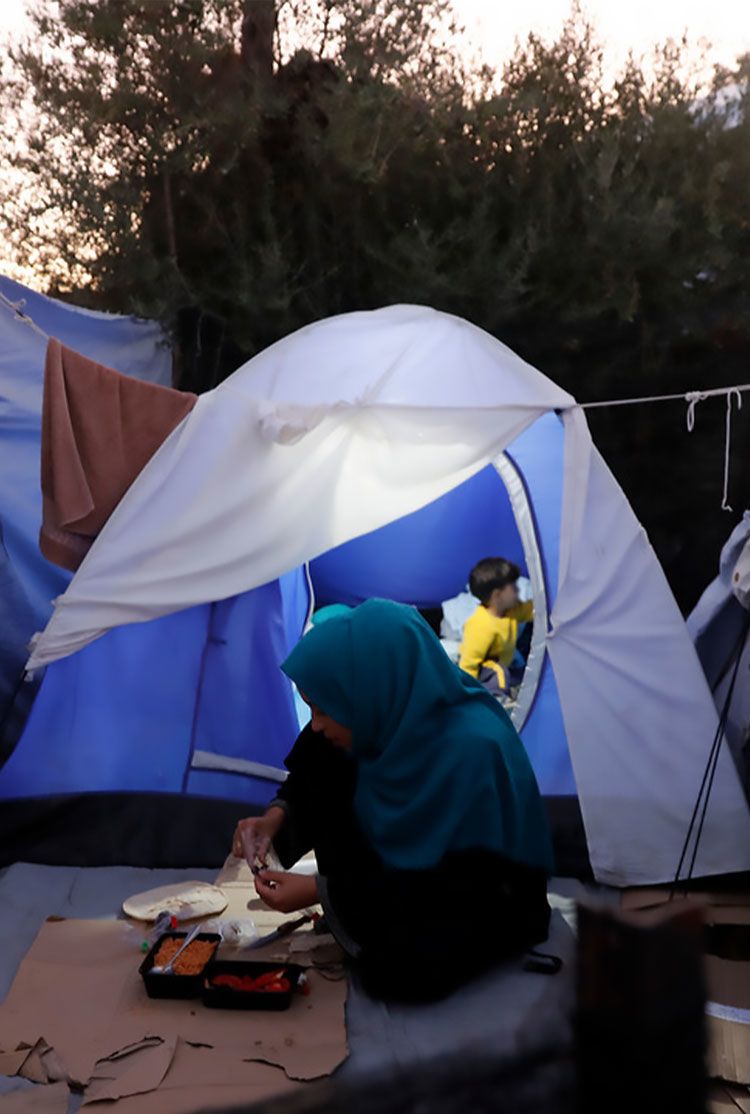
Photo:Giorgos Moutafis/Oxfam
Photo:Giorgos Moutafis/Oxfam
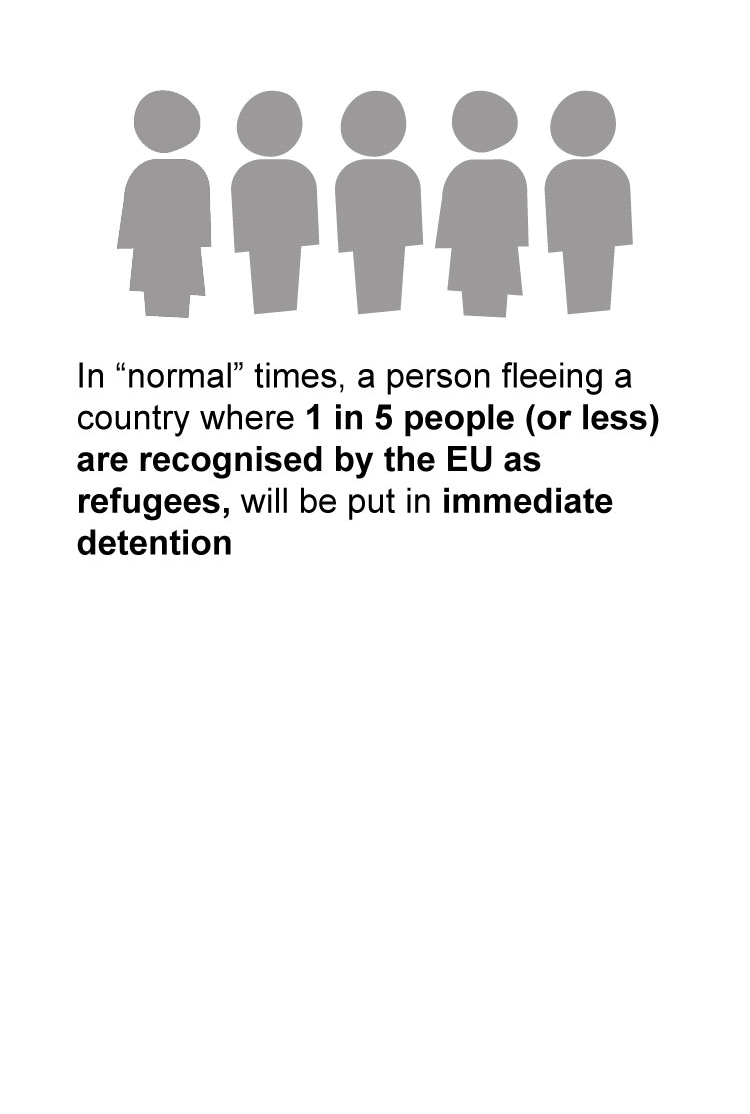
Detention as default
The EU's proposal focuses on nationality, and the treatment of asylum seekers hinges on statistics, rather than individuals’ stories and reasons for flight’.
In “normal” times, a person fleeing a country where 1 in 5 people (or less) are recognised by the EU as refugees, will be put in immediate detention. The person stays in detention while their application is funneled through an accelerated process geared to speeding up rejections and increasing returns.
In cases of high numbers of arrivals, a special “emergency” caveat kicks in. This caveat diverts almost all arrivals to the detention route. The only people exempt from detention are those fleeing a country where at least 3 in 4 people are recognised as refugees by the EU. This allows for the almost blanket detention of asylum applications and will further increase refugees’ and migrants’ vulnerabilities.
No rights
Will the new centres have enough beds? Will they provide decent housing? Food? Showers? Toilets? Will every person be able to see a doctor if they are sick?
There are no guarantees.
The EU’s proposals for screening asylum seekers upon their entry to the EU will strip them of their rights. While the EU cannot directly deny fundamental rights - like the right to seek asylum, in practice access to these rights will be hampered.
While in the ‘screening phase’, there is a risk that authorities will delay the beginning of asylum processes. This will not only delay the proper recognition of refugees; it may also be used to deny people the conditions they deserve while their asylum applications are processed.iv For example, asylum seekers arriving in the EU have the right to a general medical check-up. This check-up assesses a range of vulnerabilities, such as if they are victims of torture or sexual violence and then can provide assistance. The new proposal on the table allows a government representative to decide who can see a doctor and who cannot. This decision is made “based on the circumstances concerning the general state of the individual”.v
This method is blind to the many vulnerabilities people can experience: such as mental illnesses or being a victim of sexual abuse, and is particularly detrimental to women.
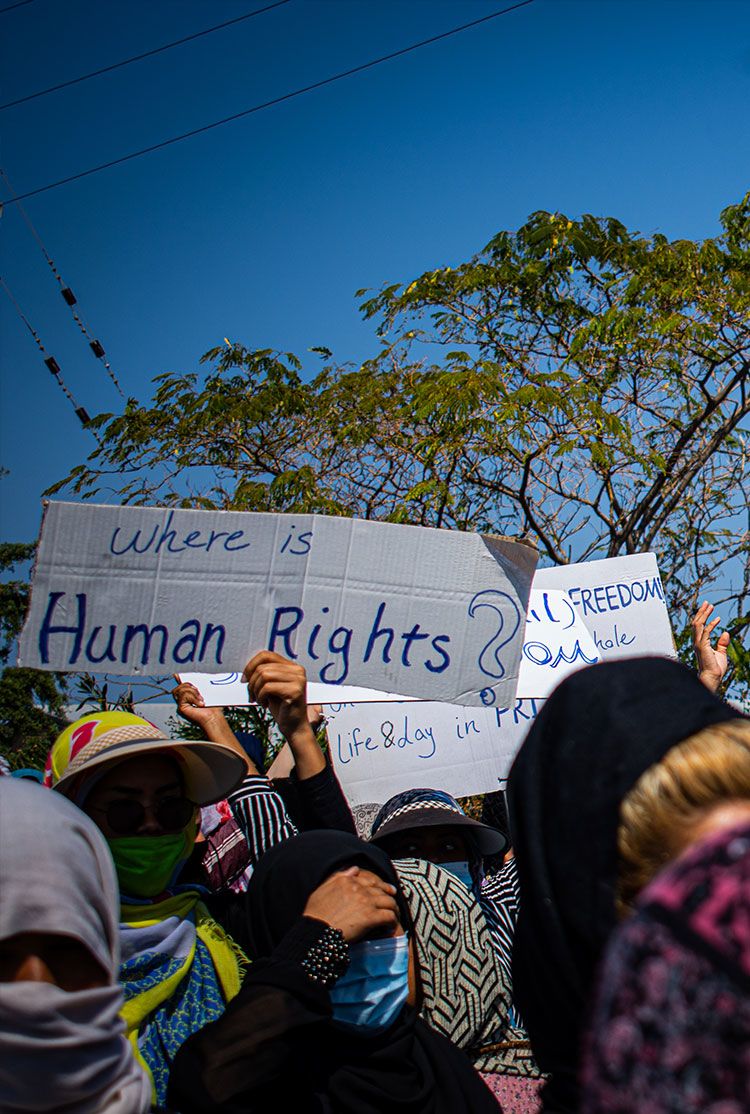
Photo: Yousif Al Shewaili / Oxfam
Photo: Yousif Al Shewaili / Oxfam
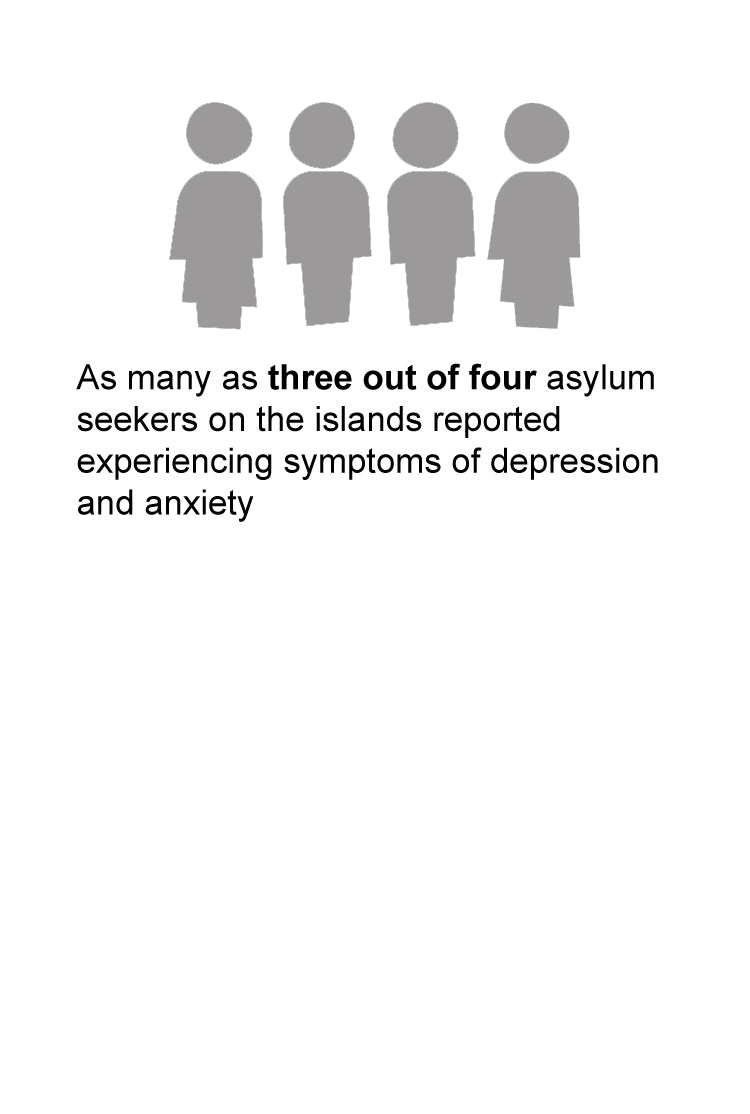
Overcrowding
In response to questions on overcrowding, the EU keeps repeating its mantra: the centres on the islands will not run overcapacity as people will be swiftly returned to other countries or relocated to the EU.
What is not clear is why the EU is holding so strongly onto this belief, when the last five years have unveiled its repeated failings. Having survived harrowing journeys, exhausted women and men, girls and boys, find themselves living in severely over-crowded conditions, standing in line to receive food or use the toilets.
Life in such conditions impacts the health of asylum seekers, and women in particular. As they try to overcome the challenges of the past, they are also exposed to new risks of violence. Over the past five years, as many as three out of four asylum seekers on the islands reported experiencing symptoms of depression and anxiety. At least two out of five people reported symptoms of PTSD.vi

The EU’s approach has failed. People have fled war to end up not in peace, but limbo. The EU needs to open its eyes and and provide protection to people seeking safety.
- The European Commission, Proposal for a Regulation of the European Parliament and of the Council introducing a screening of third country nationals at the external borders.
- Oxfam and GCR, ’Tipping the Scales: The role of responsibility- and solidarity-sharing in the situation on the Greek islands’, (February 2021) p. 14
- Memorandum of Understanding between the European Commission, European Asylum Support Office, the European Border and Coast Guard Agency, Europol and the Fundamental Rights Agency, of the one part, and the Government of Hellenic Republic, of the other part, on a Joint Pilot for the establishment of a new Multi-Purpose Reception and Identification Centre in Lesvos. 2 December 2020
- These conditions are listed in the EU’s Reception Conditions Directive and apply to “applicants” - persons who has made an application for international protection, and are waiting for a decision.
- The ’Screening Regulation’, Article 9.
- International Rescue Committe, ’ The Cruelty of Containment: The Mental Health Toll of the EU’s ‘Hotspot’ Approach on the Greek Islands’ (December 2020).
